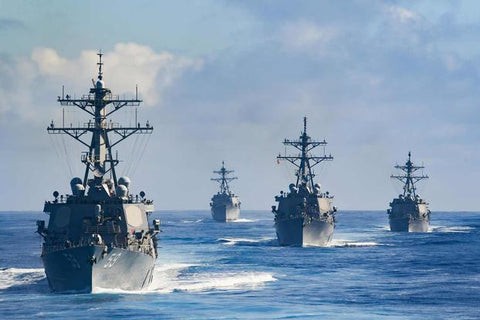The U.S. Navy and the U.S. Air Force, while both vital branches of the American military, offer distinct experiences and career paths. This article delves into a comprehensive comparison of the Navy and the Air Force, examining key aspects like mission, lifestyle, deployment, career opportunities, and more, to help potential recruits make an informed decision.
Key Differences Between the Navy and Air Force
The most fundamental difference lies in their respective domains: the Navy dominates the seas, while the Air Force controls the skies and space. This core distinction shapes their missions, lifestyles, and the overall experience for service members.
Mission and Deployment
The Navy’s mission focuses on maintaining global maritime presence, projecting power overseas, and ensuring sea control. This translates to frequent deployments aboard ships, often lasting several months. Sailors can expect to spend a significant portion of their careers at sea, participating in various operations, from humanitarian aid to combat missions.
The Air Force’s mission centers on air superiority, global strike capabilities, and rapid global mobility. While deployments are also a reality for Airmen, they tend to be shorter and often land-based. Air Force personnel are stationed at bases worldwide, supporting a range of missions, including airlift, reconnaissance, and space operations. The Air Force also plays a crucial role in cyber warfare.
Lifestyle and Base Locations
Navy life often involves close quarters and a unique work environment aboard ships. Sailors develop strong camaraderie and adapt to a structured routine. Shore duty provides opportunities for more traditional base living and family time.
Air Force life generally offers a more conventional lifestyle, with personnel residing on bases that often resemble small towns, complete with housing, schools, and recreational facilities. Family life is often more stable in the Air Force due to the reduced time spent on deployments and the greater likelihood of being stationed stateside.
Career Opportunities
Both branches offer a wide array of career fields, from technical specialties to medical and administrative roles. The Navy provides unique opportunities in areas like navigation, seamanship, and underwater operations. The Air Force excels in aviation, aerospace engineering, and cyber security.
Reserve Components: A Point of Difference
A notable difference exists in the reserve components. While both branches have reserve forces, the Air Force also boasts the Air National Guard, a state-controlled entity that provides additional service options and community-based opportunities. The Navy Reserve offers part-time service, allowing sailors to maintain civilian careers while serving their country.
Choosing the Right Branch
The decision between the Navy and Air Force is ultimately a personal one. Aspiring service members should carefully consider their individual preferences, career aspirations, and desired lifestyle. Researching specific job roles, talking to current service members, and visiting bases can provide valuable insights.
Factors like desired travel opportunities, tolerance for sea duty, and preference for a more stable family life should all be weighed. Both the Navy and the Air Force offer rewarding careers with the chance to serve one’s country, develop valuable skills, and experience unique opportunities. The key is to choose the path that best aligns with individual goals and values.
